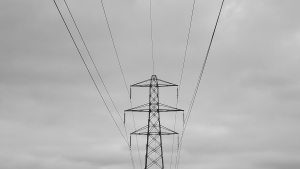Australians are right to be angry about soaring electricity prices, and it is time state governments and the big power companies came clean on why they need the extra money and, most importantly, where it will go.
One national newspaper has launched a fierce campaign against Australia’s solar and clean energy industries, blaming them for rising power prices. This attack is misleading and malicious.
The truth is that clean, green solar power, wind farms, or the one-off increase of the carbon tax, are not the main causes of rising electricity prices.
The Australian Government’s draft Energy White Paper forecasts that governments will need to invest $100 billion (twice the cost of the National Broadband Network) to upgrade our electricity grid. It is this cost that is driving up power prices, but there has been no public debate on whether this is a wise use of taxpayer funds or whether the current structure of our electricity network will meet our needs in the future.
However this rebuild process is already underway with approval given to spend the first $58 billion. The grid does need to be redesigned, rebuilt and enhanced, but what is being done now is not to create the intelligent grid we will need in coming years, but simply more of the same.
According to the Australian Energy Market Commission, electricity prices are likely to rise by over 30 per cent in the next couple of years. Network costs – the building of new power poles and wires – are expected to contribute more than 55 per cent of these costs. Increased distribution costs will mean a further 30% rise. Renewable energy schemes, including the Renewable Energy Target and State solar feed-in tariffs, are only expected to contribute 3 per cent to the cost increases, and the carbon pollution tax around 10%.
Australia’s complex and expensive power grid is in large part designed to cope with a couple of very hot days each year. Extraordinarily, one quarter of electricity costs come from just 40 hours of electricity consumption – those few days when it is so hot that everyone rushes home to turn on their air conditioning, or finds comfort in cool shopping centres. The proposed $100 billion investment in our power grid will reinforce this situation, and that fails the common sense test.
The draft Energy White Paper makes it very clear the huge uptake of air conditioners across Australia is driving up power prices, and low income earners are subsidising wealthier Australians. The average 2 kilowatt reverse‐cycle air conditioner costs a consumer about $1,500 but imposes costs on the energy system of up to $7,000, a cost that is spread across all electricity customers.
Instead Governments and big power companies should be looking to reduce demand for electricity, thus lowering the $100 billion taxpayer bill and limiting electricity price rises.
There is already good news here. Energy demand is actually falling across Australia.
Over the last three years electricity consumption in the National Electricity Market has fallen by 3.2 per cent. The REC Agents Association, a national body representing companies that create and trade in renewable energy certificates, has estimated that by 2015 electricity consumption could have fallen by 5 per cent as a result of the installation of solar panels and energy efficiency measures.
The Renewable Energy Target, which is supported by all political parties, has been a huge success in reducing demand for electricity and encouraging Australians to take action on climate change. One fifth of Australian families now have solar panels or solar hot water systems, and that figure is set to soar in the future.
The installed cost of a solar panel system has dropped more than 80 per cent over the last five years, and the cost of solar continues to plummet as the cost of coal-fired electricity soars. Solar is now competes head to head with retail electricity and is already the rational economic choice.
The Australian Energy Market Operator has estimated there could be the equivalent of 20 coal-fired power stations in deployed solar by 2020. The CSIRO last week concluded this could be achieved without significant additional cost to the electricity network.
Intriguingly, the cost of producing power is actually falling, but Australian families are paying more for their electricity. It doesn’t make sense, until you realise our power grid is archaic and not designed for the decentralised power system that is rapidly emerging.
It is relatively cheap and easy to produce power, but it is very expensive to transport electricity over hundreds of kilometres from coal-fired power stations to our big cities, and that cost is driving up power bills. Turning people’s houses and businesses into small power stations through the installation of solar panels is one way of helping resolve this problem.
If Australians are producing their own power with solar panels, they should be paid a fair price for that power. But increasingly that is not the case. In Sydney today you can generate your own solar electricity and be paid just 6 cents kWh, but you have to pay 25 to 29c/kWh cents to buy electricity from the big power companies. Here’s another way of looking at it – you can sell your electricity to the power company for 6 cents, and then the power company sells it to your neighbour for 29 cents – a tidy and windfall profit.
Australia’s electricity network is changing rapidly, with energy demand falling and the use of solar rising dramatically. This trend will escalate as Australia puts a price on carbon pollution and moves towards a lower carbon economy. Indeed, the Chief Executive of Origin Energy, Grant King, has said Australia won’t need a new baseload power plant until at least 2020.
With all of these rapid changes, it is the right time to have a proper debate on whether we really need to invest $100 billion of electricity user’s funds to replicate our old energy infrastructure. Australians angry about soaring power bills should be putting this question to their governments and big power companies.
Australians should be demanding that the electricity supply system they are paying for is one that meets their future needs, and is not just designed to prop up those making money from the dirty power systems of last century.
John Grimes is chief executive of the Australian Solar Energy Society
*Only 5 days until the Australian Clean Technologies Competition 2012 closes. To enter, click here






